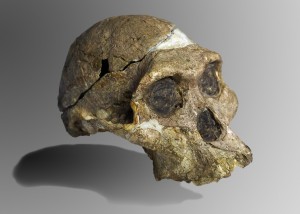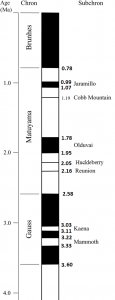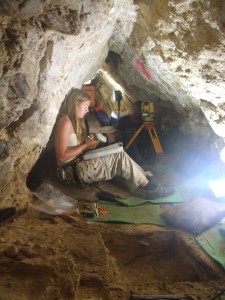I first went to South Africa after finishing my undergraduate degree in 1997. The site that I visited was the Makapansgat Limeworks in the Limpopo Province of northern S. Africa. The site is world famous as one of the palaeocave deposits from which the early human species Australopithecus africanus has been recovered. The most complete cranium of this species is Sts 5, also known as Mrs Ples (although it is probably a young male), from the site of Sterkfontein, near Johannesburg. At the time of my first trip in 1997 I had wanted to undertake an MSc in Biological Anthropology and spend my life studying such skulls which I have always found fascinating. However, I was convinced on that trip by my soon to be supervisor that I should instead get into the buisness of studying rocks and caves. Being a caver with the Liverpool University Potholing Club and at the time being rather obsessed by caves it was not that difficult to twist my arm. So I started out undertaking a study of the stratigraphy and site formation of the Makapansgat Limeworks site and this led to starting a PhD on the magnetostratigraphy of the site and soon after on Mrs Ples and the Sterkfontein caves.
The age of hominin fossils such as Mrs Ples can be estimated by measuring the direction of magnetic minerals preserved in cave sediments and speleothem (stalagmites and stalactites). The Earth’s magnetic field currently runs from north to south, which is known as a NORMAL field state. However, at various times throughout Earth’s history the field has reversed by 180 degrees in what is known as a REVERSED field state. The timing of such major field changes is pretty well known for the last 7 million years (Ma) (the time-scale of human evolution) based on studies of sea floor spreading zones, where these changes are recorded like a bar code, and radiometric dating of volcanic rocks. This bar code of field change is known as the Geomagnetic polarity Time-Scale or GPTS. All rocks contain some form of magnetic mineral. The direction of the Earth’s field is preserved in cave sediments when water flushes these sediments into pools of water. When the sediment settles out of suspension in water the magnetic minerals orient themselves to the contemporary magnetic field. The sediments then become compacted and cemented, preserving the magnetic field direction. By measuring sediments in caves and comparing the polarity with the GPTS the age of the sediments, and therefore the fossils within them, can then be determined.
This type of work is not undertaken in caves very often because caves can have extremely complicated depositional sequences, which are often relatively short when compared to open landscape volcanic sequences in places such as East Africa. The sediments will often only record a single polarity that could be fitted to any one of the NORMAL or REVERSED polarity periods (Chrons or SubChrons). However, if the cave sediments contain fossils the polarity to which the cave record relates can be established by considering the general time range of the fossils found within the sequence. The resultant palaeomagnetic age is often more refined than the age range for the fauna alone. In some cases a radiometric age (like radiocarbon dating, although this method is of little use when compared to magnetostratigraphy because it does not date material older than ~50,000 years. I once read in the Lonely Planet Guide to South Africa that the Makapansgat Limeworks was dated using radiocarbon to 3 million years ago!! quite a feat given this upper age range) can provide a start point to tie in the magnetostratigraphy of the section. In East Africa this is easy as volcanic material exists which can be dated using Potassium-Argon Dating. In South Africa however, no volcanic material exists in the caves and so no radiometric ages were available to date the deposits until recently.
The solution to this problem at Sterkfontein, and particularly relevant to Mrs Ples, is that some very rapid reversals of the Earth’s magnetic field also occur (perhaps as rapid as 6,000-18,000 years long) and these are sometimes recorded in the sequences because the cave sediments are deposited so slowly over a short time period. At Sterkfontein the Mrs Ples fossil was deposited at the same time as a speleothem (like a stalagmite) layer which records two of these short polarity events. This allowed the age of the deposit containing Mrs Ples to be estimated to between roughly 2.16 to 2.05 Ma, around the time of the Reunion and Huckleberry Ridge geomagnetic field events. This was much younger than originally expected (>2.6 Ma). This age has since been confirmed by the successful uranium-lead dating of part of the same flowstone to around 2 Ma. Some fossils of Au. africanus at Sterkfontein are dated to as old as 2.6 Ma and others from Makapansgat may be as old as 3.0 Ma, however, Mrs Ples is currently the youngest known example at ~2.1 Ma and may very well represent the last of his species. Whether Mrs Ples is our direct ancestor……….well, that’s another story.



